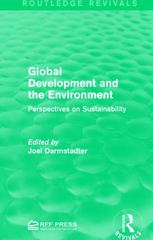Question
1. The basic structure of every elasticity measure is Select one: a. the percentage change in quantity demanded that results from a ten-percent change in
1. The basic structure of every elasticity measure is
Select one:
a. the percentage change in quantity demanded that results from a ten-percent change in price.
b. the percentage change in price that results from a one-percent change in quantity demanded.
c. the percentage change in quantity demanded that results from a one-percent change in (price/income/price of related good).
2. A research article includes the line "While a relatively wide range of estimates has been produced for the price elasticity of demand for cigarettes, most of the estimates from the USA and other high income countries tend to fall in the relatively narrow range from 0.25 to 0.50."
This means that if the price of cigarettes were to decrease 10%, the quantity of cigarettes demanded would
Select one:
a. increase by 2.5% to 5.0%.
b. increase by 0.25% to 0.50%.
c. decrease by 2.5% to 5.0%.
3. The same research article includes the line "the overall price elasticity of teen smoking was 1.44. This was more than three times the estimated elasticity of 0.42 obtained from the study of adults."
This implies that
Select one:
a. teenagers are willing to pay more than three times as much for cigarettes as adults.
b. teenagers will purchase much fewer cigarettes if prices rise than adults, who will only reduce their purchases a minor amount.
c. teenage cigarette demand is inelastic, while adult cigarette demand is elastic.
4. The point elasticity for the demand function Q=1003.5PQ=1003.5P at the ($10, 65) point is
Select one:
a. 3.565$10=22.753.565$10=22.75
b. $10$1065=1.538$10$1065=1.53
c. 1003.5(10)=651003.5(10)=65
d. 3.5$1065=0.538
5. You overhear an economist saying that the demand for magnesium groovehelmets is inelastic. This means that a given price change will induce a large quantity demand response.
Select one:
True
False
6. At its current price, demand for magnesium groovehelmets is inelastic. If its price were to decrease, total revenue would be expected to rise.
Select one:
True
False
7. Which product would tend to have the most elastic demand?
Select one:
a. A penthouse apartment across the street from Central Park in New York City.
b. A refrigerator that is needed after your old one unexpectedly stops working.
c. A typical three-bedroom, two-bathroom home in the suburbs.
d. An Almond Joy (coconut, almonds, and chocolate) candy bar.
Step by Step Solution
There are 3 Steps involved in it
Step: 1

Get Instant Access to Expert-Tailored Solutions
See step-by-step solutions with expert insights and AI powered tools for academic success
Step: 2

Step: 3

Ace Your Homework with AI
Get the answers you need in no time with our AI-driven, step-by-step assistance
Get Started


